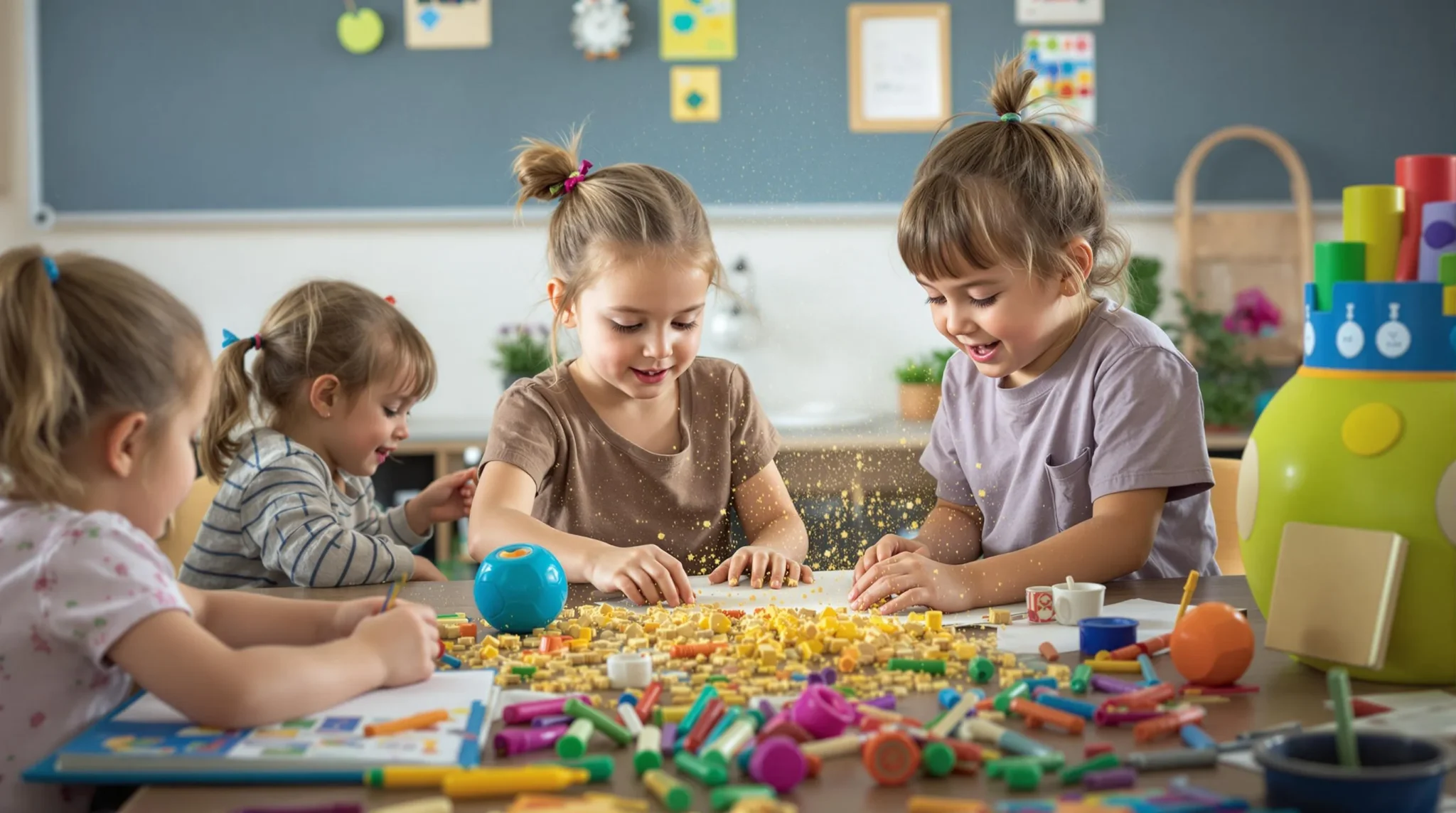In a world where kids are glued to screens more than ever, dynamic physical education is the superhero every elementary school needs. It’s not just about dodgeball and jump ropes; it’s about igniting a passion for movement and fun. Imagine a classroom where kids are not only learning but also laughing, jumping, and dancing their way to fitness. Sounds like a dream, right?
This guide dives into the exciting realm of dynamic physical education, offering innovative strategies and activities that keep children engaged and active. With the right resources, teachers can transform their gym classes into epic adventures that inspire a lifetime of healthy habits. So buckle up and get ready to discover how to make physical education the highlight of the school day—because who says learning can’t be a blast?
Table of Contents
ToggleOverview of Dynamic Physical Education
Dynamic physical education prioritizes engaging learning experiences for elementary school children. It encourages active participation through diverse activities beyond traditional sports. This approach fosters social interaction and teamwork among students. It aims to create a supportive environment where children feel comfortable to express themselves physically.
Class activities often include games that emphasize movement and skill development. Unique methods, such as cooperative games and obstacle courses, promote physical fitness while making exercise enjoyable. Teachers can introduce various equipment, like balls, cones, and ribbons, to diversify activities further. Such resources stimulate creativity and allow children to explore movement in new ways.
Assessment in dynamic physical education focuses on measuring progress rather than competition. Evaluations can include participation rates, improvement in skills, and overall enjoyment of the activities. This shift encourages children to adopt active lifestyles and develop intrinsic motivation.
Cultivating a love for movement requires a curriculum tailored to children’s interests. Incorporating dance, yoga, and other non-traditional sports expands opportunities for self-expression. Teachers can adjust lesson plans based on student feedback to meet their needs better.
Dynamic physical education not only increases physical competence but also nurtures emotional well-being. Children benefit from reduced stress and improved mood when physically active. As a result, structured physical education encourages lifelong commitment to health and fitness standards. By promoting a balanced approach, the curriculum supports overall development in students.
Importance of Physical Education in Elementary Schools
Dynamic physical education plays a crucial role in the overall development of elementary students. It actively engages children, helping them form positive attitudes toward movement and fitness.
Benefits for Children
Dynamic physical education offers numerous benefits for children. Increased physical activity improves motor skills and coordination. Social skills receive a boost through teamwork in group activities. Emotional well-being grows as children express themselves through movement. Additionally, participation in diverse activities fosters creativity. Children gain confidence as they explore various physical challenges. Active engagement ensures fun learning experiences, making exercise an enjoyable routine.
Impact on Academic Performance
Physical education significantly impacts academic performance. Increased physical activity correlates with higher concentration levels in the classroom. Studies indicate that students who regularly participate in physical education often achieve better test scores. Memory retention improves through the release of endorphins during exercise. Additionally, physical fitness contributes to enhanced self-discipline. Students who engage in movement exhibit improved classroom behavior. A comprehensive physical education curriculum can lead to a more focused and motivated classroom environment.
Key Concepts in Dynamic Physical Education
Dynamic physical education centers on fostering active engagement among elementary school children. It emphasizes the importance of interactive experiences that motivate participation.
Engaging Activities
Games that promote movement stand at the core of dynamic physical education. Incorporating activities such as tag, dance, and cooperative challenges helps fulfill diverse needs. Teachers can introduce non-traditional games alongside classic activities, allowing exploration of new skills. Opportunities for teamwork arise through small group activities and relay races. Fun and enjoyable practices ensure that children develop a love for physical activity. Utilizing various equipment enhances these experiences, while obstacle courses cultivate creativity. Each activity reinforces physical fitness through enjoyable means.
Curriculum Development
A well-structured curriculum forms the backbone of dynamic physical education. Developing a curriculum that integrates children’s interests increases engagement. They can explore activities like martial arts, yoga, or fitness challenges, catering to different passions. Incorporating a mix of sports and non-competitive ventures promotes skill development without the stress of competition. Assessments focus on personal growth and improvement, fostering a supportive atmosphere. Teachers can nurture emotional well-being and enhance social skills through collaborative projects. Overall, a dynamic curriculum aligns with children’s developmental needs.
Implementing Dynamic Physical Education Programs
Dynamic physical education programs require thoughtful implementation to ensure effectiveness and engagement. Prioritizing educator training can maximize the benefits of these programs.
Training for Educators
Training for educators focuses on equipping them with innovative strategies tailored to dynamic physical education. Workshops and professional development sessions provide teachers with the skills to design engaging lesson plans. They learn to facilitate cooperative games and incorporate diverse activities that resonate with children. Understanding the importance of fostering an inclusive and supportive environment is key. Educators also benefit from learning assessment techniques that prioritize progress over competition. Such training sessions aim to inspire teachers to create enriching experiences that encourage active participation.
Resources and Materials
Resources and materials play a vital role in implementing dynamic physical education effectively. Schools should invest in versatile equipment like sport balls, hula hoops, and exercise mats to enhance activity variety. Utilizing lesson plan guides helps educators align activities with students’ interests, ensuring engagement. Online platforms provide access to instructional videos, innovative games, and physical education curricula designed for flexibility. These materials allow for adaptation based on classroom dynamics and skill levels. Additionally, sharing resources within educator networks fosters collaboration and the exchange of best practices, enhancing overall program quality.
Challenges and Solutions
Dynamic physical education faces several challenges that can impact its effectiveness in elementary schools. Recognizing these obstacles allows educators to implement effective solutions.
Addressing Common Obstacles
Limited funding reduces access to diverse physical education resources. Many schools struggle with outdated equipment and insufficient facilities. Time constraints also affect scheduling, making it difficult to incorporate dynamic activities into the curriculum. Inadequate training for teachers may lead to a lack of innovative strategies in lesson planning. Additionally, low student interest in traditional activities can decrease overall participation rates.
Strategies for Success
Resource allocation plays a vital role in enhancing dynamic physical education. Schools should prioritize investments in modern equipment, creating engaging environments. Collaborative efforts among educators can lead to the sharing of best practices and resources. Incorporating student interests into lesson plans encourages active participation. Utilizing community partnerships offers additional support and resources to enrich physical education programs. Implementing flexible scheduling allows for more dynamic activities without the pressure of traditional time constraints.
Conclusion
Dynamic physical education plays a vital role in shaping the overall development of elementary school children. By prioritizing engaging and interactive experiences, it cultivates a love for movement while enhancing motor and social skills. This approach not only promotes physical fitness but also supports emotional well-being and academic performance.
Implementing innovative strategies and diverse activities allows educators to create a supportive environment where children thrive. Addressing challenges such as funding and training ensures that dynamic physical education remains effective and enjoyable. Ultimately, fostering lifelong healthy habits in students is the key to nurturing a generation that values fitness and well-being.




